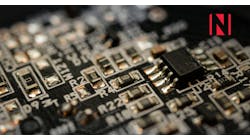Discussion about IoT in warehouse management has been heating up in recent years, and for good reason. Automation, driven by IoT, can significantly enhance and streamline operations while providing a host of cost and productivity benefits. It also empowers just-in-time or on-time delivery. This offers minute-to-minute precision for customer orders and beyond, making warehouse management easier than ever.
However, IoT and big data systems mean troves of digital information flowing in and out of a business. This data is at the heart of IoT’s many benefits, but it raises some pertinent questions: What other benefits can these kinds of solutions provide? How do they apply to modern warehouse management?
Here’s how IoT can boost warehouse management, increase productivity and lead to a more robust bottom line.
1. Optimized Space Utilization
At its most basic, a warehouse is an inventory or operational storage facility. One of the most important aspects of IoT in warehouse management is proper or effective space handling. It’s not just about creating and optimizing available room for inventory at rest but also the entire operation, including maintenance supplies, machinery parts and equipment.
The IoT and smart sensors can help optimize available space and manage the facility in many new and useful ways. Administrators can receive real-time entry and exit data about goods, on-site location data and related configurations.
For example, shelving equipped with IoT sensors can report available space back to a central system, allowing everyone to visualize allocations digitally. Items are also rarely, if ever, misplaced because everything has a tag. The network and management can easily query where things are.
2. Real-Time Decision Management
Data flowing in enables real-time pivoting and decision management for the entire team, not just leaders. Even better, the information can be fed into an intelligent or AI-driven analytics platform that reveals further insights or helps optimize decisions.
Warehouses go from a relatively effective environment with extended lead times for decisions and unexpected events to something that’s never been seen before, with near-instant solutions for minor processes. Those insights can help teams on the ground or management make a split-second decision with remarkable precision. There are fewer hang-ups or delays, and when something unexpected does happen, everyone is ready for it.
3. Unprecedented Transparency
Achieving full efficiency and success without transparency is impossible in logistics, especially when working with partners, vendors and other supply chain actors. It’s vital to maintain a healthy balance by not revealing too much or too little. The IoT empowers a level of transparency across all industries and gives administrators complete control over the resulting data.
IoT in warehouse management systems can monitor and report on scheduling, procurement, space utilization, output and other performance indicators. They can be configured to flag or notify the necessary parties when anomalies occur. For instance, the quantity of a certain good dropping below a particular threshold could indicate a shortage.
4. Predictive Maintenance and Operations
The influx of data activates predictive decision-making, whether for maintenance tasks, operations or something else. A machine learning platform can assess dozens of IoT-powered systems connected to a mission-critical piece of hardware to pinpoint and indicate when performance begins to falter.
More importantly, it can flag events that would lead to costly maintenance or delays, thus allowing teams to deliver preemptive servicing. They can act in advance of any problems to prevent a major impact on the operation and a drop in the team’s productivity.
Predictive solutions also apply to the rest of the operation. They can help organizations better prepare for what’s coming down the pipeline, from the inflow of goods to the performance of vendors, partners and third parties. This is a huge boon for maintenance tasks that are highly nuanced or complex.
With regard to maintenance, there are many factors to consider when working with air compressors or hardware that call for their usage, such as the type of compressor, installation conditions and scheduling. They’re especially important for climate control and cooling systems in large warehouses. When these systems fail it can prove detrimental not just to the surrounding environment and personnel, but also to goods, perishables and more.
IoT solutions can help manage all this and keep servicing schedules on track, particularly by monitoring motor temperatures, currents and vibrations—and pinpointing anomalies in their normal operations. Identifying properties that could lead to bigger problems, and dealing with them early, will keep the compressors online and the related systems running for much longer.
5. Precision Quality Maintenance
Depending on the goods or equipment, there may be a series of limitations or factors necessary to preserve quality, health or longevity. Certain food items are a great example, as they must remain at a particular temperature range. The IoT can boost precision through continuous monitoring and data-sharing about the related storage systems.
The system can send out alerts if a temperature moves beyond a threshold. It can kickstart emergency or connected technologies to maintain quality without human input. An IoT sensor might drop the temperature of a cooling unit or enable a backup system to cover for a failing one.
6. Labor and Process Cost Reductions
A major expense for any warehouse is labor, likely consuming most of an organization’s budget. Seasonal events also increase the need to scale up or reduce employment. However, this is no longer necessary, thanks to IoT.
IoT allows for the development of smarter, automated infrastructure. That includes autonomous robots, guided vehicles and machinery. These implementations reduce the burdens on the existing operation, eliminating the need to bring on more workers while maintaining or even increasing efficiency across the board.
This results in lower labor and process costs, although upfront expenses for the technologies and infrastructure may be higher. However, the prices of IoT sensors have decreased over the years, from about $40 a piece in 2012 to $2 by 2020.
IoT in Warehouse Management Operations
Smarter and more efficient warehouse management solutions are being created thanks to the IoT and connected devices. The continuous streams of data they provide, along with enhanced controls and real-time reactions, amplify the benefits. They are only expected to get better in the future.
There’s virtually no reason not to implement IoT in warehouse management operations, even just on a trial basis. Optimized space utilization, predictive decision-making and labor cost reductions are just some of the benefits this technology can realize.









